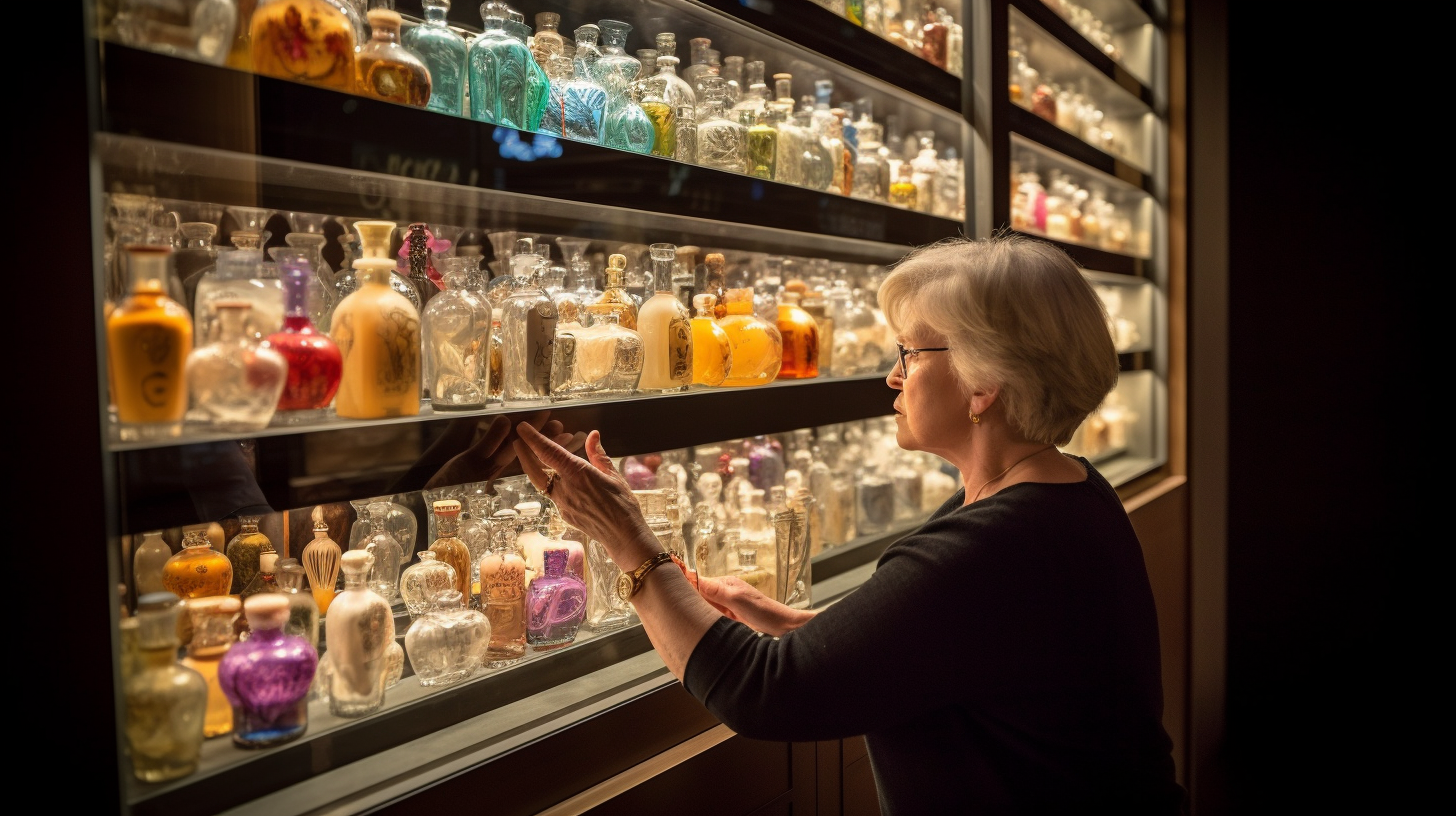The Ultimate Guide to Understanding the Fragrance Wheel: Exploring Aromas and Scent Families
Welcome to “The Ultimate Guide to Understanding the Fragrance Wheel: Exploring Aromas and Scent Families.” Perfumes and fragrances have captivated human senses for centuries, evoking emotions, memories, and desires. But have you ever wondered how perfumers create such complex scents? How do they categorize and classify different aromas? This is where the fragrance wheel comes into play.
The fragrance wheel is a powerful tool used in the world of perfumery to understand, organize, and create unique scents. It provides a systematic approach to categorizing fragrances based on their dominant notes and helps both professionals and enthusiasts navigate the vast world of perfumes. In this guide, we will take a deep dive into the fragrance wheel, exploring its history, purpose, and practical use.
Understanding the Fragrance Wheel: A Brief History
The concept of the fragrance wheel was introduced by Michael Edwards, an Australian fragrance expert, in 1983. Edwards revolutionized the way we understand and describe perfumes by developing a visual representation of scent families. Inspired by artist Johannes Itten’s color wheel, Edwards created a circular diagram that organizes fragrances based on their olfactory characteristics.
The fragrance wheel consists of four main scent families: Floral, Oriental, Woody, and Fresh. Each family is further divided into subcategories to provide a more detailed classification of scents. By using this system, perfumers can better understand how different notes interact with each other and create harmonious compositions.
The Purpose and Benefits of the Fragrance Wheel
Now that we know what the fragrance wheel is let’s explore why it is such an invaluable tool in the world of perfumery:
1. Classification:
The primary purpose of the fragrance wheel is to classify perfumes into distinct scent families. This classification allows perfumers, retailers, and consumers to easily identify and understand the olfactory characteristics of a fragrance. It helps them make informed choices based on their personal preferences and desired mood.
2. Composition:
The fragrance wheel serves as a guide for perfumers when creating new scents. By understanding the different scent families and their relationships, perfumers can experiment with various combinations of notes to achieve the desired effect. The fragrance wheel acts as a roadmap, helping them navigate through the vast array of possibilities and create balanced and harmonious compositions.
3. Consumer Guidance:
For consumers, the fragrance wheel is a valuable tool for exploring new scents. By identifying their preferred scent family, they can easily narrow down their options and discover fragrances that align with their taste. Additionally, understanding the fragrance wheel empowers consumers to make more informed decisions when purchasing perfumes or colognes.
The Fragrance Wheel: Exploring Scent Families
Now let’s delve deeper into each of the four main scent families represented on the fragrance wheel:
1. Floral:
The floral family is perhaps the most popular and widely recognized scent category. It encompasses fragrances that primarily feature floral notes such as rose, jasmine, lily of the valley, or violet. Floral scents are often associated with femininity and evoke feelings of elegance, romance, and freshness.
2. Oriental:
Oriental fragrances are warm, exotic, and sensual. They typically feature rich notes like vanilla, amber, musk, or spices such as cinnamon or cardamom. Oriental scents evoke a sense of mystery and allure, making them popular choices for evening wear or special occasions.
3. Woody:
The woody family is characterized by earthy and aromatic notes such as sandalwood, cedarwood, patchouli, or vetiver. These scents often evoke a sense of warmth, grounding, and sophistication. Woody fragrances are favored by both men and women and are commonly used in unisex or masculine perfumes.
4. Fresh:
The fresh family represents scents that are clean, crisp, and invigorating. They often feature citrus notes like bergamot, lemon, or grapefruit, as well as green accords such as mint or basil. Fresh fragrances are perfect for everyday wear and are associated with a sense of energy and vitality.
Using the Fragrance Wheel: Practical Tips
Now that you have a basic understanding of the fragrance wheel and its scent families let’s explore some practical tips on how to use it:
1. Identify Your Preferred Scent Family:
Take some time to explore different fragrances from each scent family to identify which one resonates with you the most. This will help you narrow down your options when choosing a new perfume.
2. Experiment with Combinations:
Once you have identified your preferred scent family, don’t be afraid to experiment with different combinations within that family. Mix and match fragrances to create your unique signature scent.
3. Test Before You Buy:
Always test perfumes on your skin before making a purchase. Fragrances can smell different on each individual due to factors such as body chemistry and pH levels. Testing allows you to experience how the fragrance develops over time.
4. Consider the Occasion:
Different scent families are more suitable for specific occasions. For example, fresh or floral fragrances are great for daytime and office wear, while oriental or woody scents are better suited for evenings or special events.
Conclusion
The fragrance wheel is an essential tool in the world of perfumery, providing a structured approach to understanding and classifying scents. By exploring the different scent families represented on the wheel, you can gain a deeper appreciation for the art of perfume composition and find fragrances that resonate with your personal style and preferences.
So, next time you’re shopping for a new perfume or simply want to expand your olfactory horizons, remember to consult the fragrance wheel. It will guide you on an aromatic journey, helping you discover captivating scents that leave a lasting impression.




